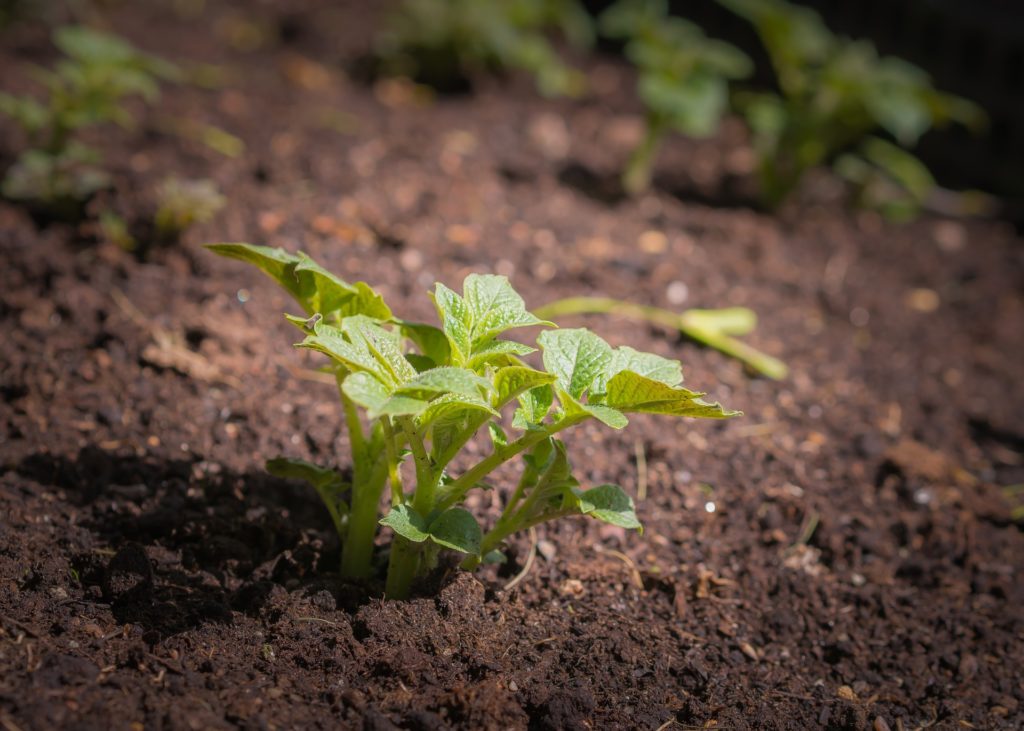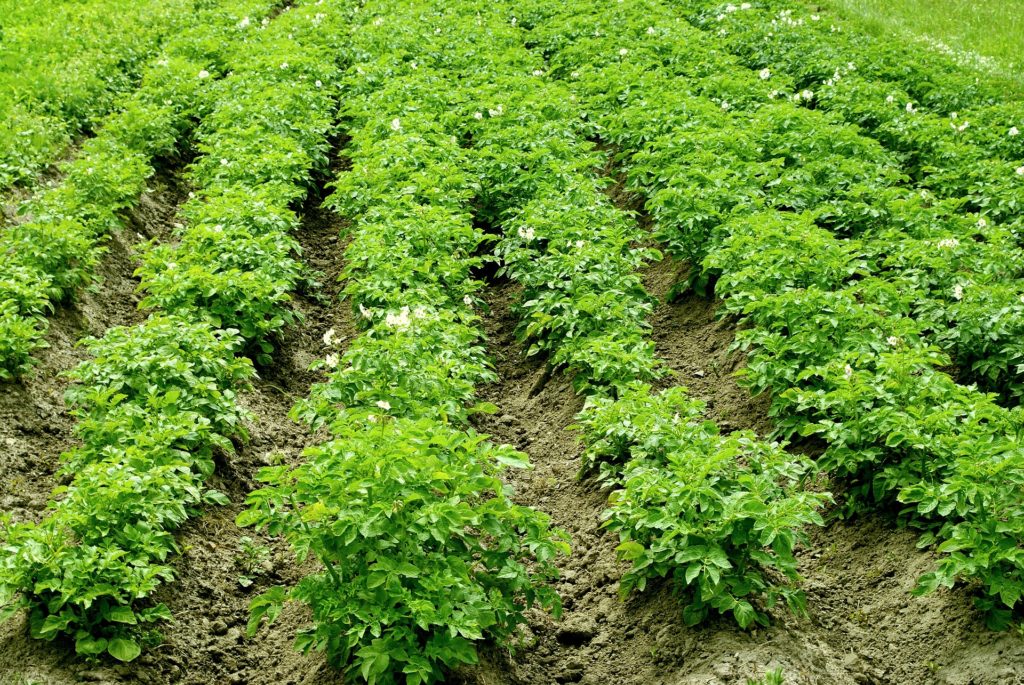You’ve been waiting forever for your potato plants to finally die down.
For months, you’ve been fantasizing about harvesting pounds and pounds of potatoes, more than enough to supply your family for a few months; maybe even keep them going through the winter, as potatoes are one of the best survival foods for the cold months.
You imagined potatoes the size of your foot, excellent for baking with!
As you rake the dirt to the side and uncover your incredible harvest, you find small, golf-ball sized potatoes….
What on earth happened?

Why Are My Potatoes So Small?
If your potatoes are uniformly small, there was a crop-wide issue. If you had a few small ones per plant but otherwise large potatoes, then this situation is actually quite normal. A standard harvest will have one or two very large potatoes, several middle or standard sized ones, and a few little or tiny ones. Not all of the potatoes will be huge, especially in a home gardener’s plot.
If you had a crop-wide potato yield problem, you should recollect all of your gardening practices from planting to harvest.
- Did plants receive enough water?
- Were they grown in a very hot season?
- Were the potatoes planted in full sun?
- Did you experience pest or disease issues?
- Did you overcrowd the plants?
- Were the seed potato varieties known for growing large tubers?
- Did you harvest them too early?
- Did you give them too much fertilizer?
- Was the soil rich and was the pH ideal?
All of these will directly affect the growth of the potato plants and the tubers that they produce.

Did You Grow Your Potatoes in Towers, or In the Summer Heat?
Potato grow bags, potato cages, growing towers, and much more are all the rage in potato gardening currently. However, what those people FAIL to tell you is that potatoes are sensitive to heat and drought during tuber production.
Yes. Those same people who gush about grow bags and towers are not giving you the information you need. Potato grow bags like the ones below are more than capable of producing a GREAT harvest, but they require more water than a potato bed within the ground. In addition, the containers should be given a blanket of straw. Straw will keep moisture in, and keep the heat out. If you have a cooler fall with a good length of time before frost, try starting your potatoes 3 months before the first frost. You might find more success with this than spring growing.

Did You Offer Enough Water?
Tubers require adequate water when they begin to bulk up. Without enough water, they will not grow very large. The tubers must not be competing with the foliage for available water; if they are, the foliage will be given priority. Make sure that the potato plants are receiving closer to 2″ of water per week after flowers bloom. Use straw to help hold moisture in.

Did You Feed Your Potatoes Too Much Nitrogen Fertilizer?
If you use fertilizer, you may notice a sudden growth among the foliage. This might seem like an excellent sign; it may even lead you to believe that the potatoes needed it. However, potatoes will send up lots of green foliage when given excess nitrogen; but this can be a bad thing.
The plant will dedicate its energy towards foliar growth rather than tuber growth.
Instead, offer the potatoes fertilizer that is lower in nitrogen. Root vegetables require more potassium and phosphorous than most other plants, and fertilizers are not created equal. There is no “one size fits all”, as some plants will get too much of one nutrient. In this case, it would be potatoes receiving too much nitrogen.
Did The Potatoes Grow In Full Sun for a Full Season?
If the plants are to produce large mature tubers, they must have the ideal growing conditions to generate and store energy within their potatoes. Potatoes require full sun, not a shaded location. The more shade they receive, the less growing and energy production they will accomplish.
They must also be allowed to grow for a full cycle; meaning, they must grow from seed tuber until the plant’s natural death (or shortly before in cooler growing zones.) If you harvest the plant too early, the tubers will not have had sufficient time to mature.
